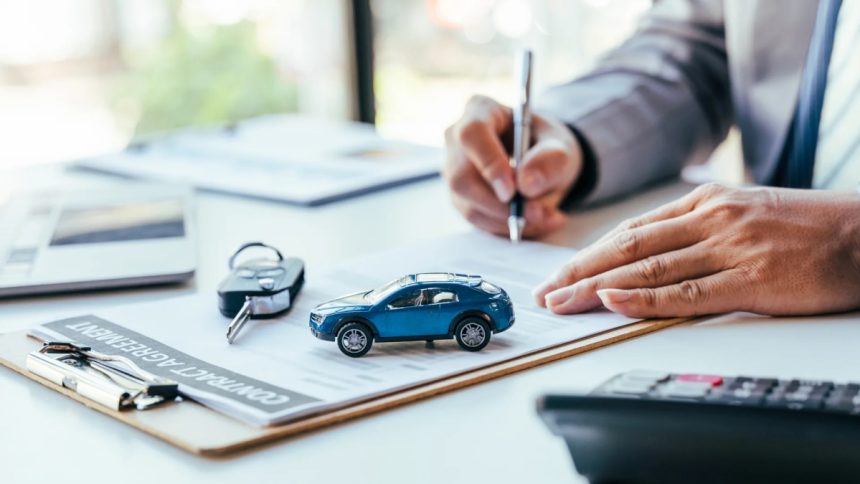No-contact accidents are unique incidents where two or more vehicles are involved, but the responsible driver does not make direct contact with the victim’s car. These cases can be just as dangerous as traditional crashes and often lead to significant injuries or property damage. Yet, filing an insurance claim for a no-contact accident presents a unique set of challenges that victims must navigate carefully.
One of the biggest hurdles is proving that another driver caused the accident. Without physical contact, insurance companies may question the validity of the claim. Gathering evidence, such as witness statements, dashcam footage, or police reports, is crucial for strengthening your case. Documentation can make the difference between a successful claim and a denied one.
The Importance of Timely Reporting
Time is of the essence when dealing with no-contact accident claims. Reporting the incident to both the police and your insurance company as soon as possible is essential. Delays in reporting may result in a denial of your claim, as insurers often require prompt notification. Make sure to provide a detailed account of what happened, including the description of the other vehicle, if possible.
Immediate medical attention should also be a priority. Even if you feel fine after the accident, injuries like whiplash or internal trauma can manifest later. Having medical documentation not only ensures your well-being but also serves as evidence for your insurance claim. This can strengthen your case significantly when seeking compensation.
Understanding Uninsured and Underinsured Coverage
In many no-contact accidents, the at-fault driver either leaves the scene or cannot be identified. This is where uninsured and underinsured motorist coverage becomes critical. This type of coverage is designed to protect victims when the responsible party lacks adequate insurance. Filing a claim under this coverage can help you recover for medical expenses, vehicle repairs, and other losses.
However, dealing with insurance companies can be a daunting process. They may attempt to minimize your payout or argue that your policy does not cover the incident. Consulting with an experienced uninsured motorist accident attorney can provide you with the guidance needed to handle these complex cases. They can ensure that your rights are protected and that you receive the compensation you deserve.
Proving Fault in a No-Contact Accident
Proving that another driver’s negligence led to your accident is often the most challenging part. In cases where the other driver leaves the scene, having solid evidence is crucial. Witnesses who saw the incident unfold can be invaluable, as can surveillance footage from nearby traffic cameras or businesses. The more evidence you have, the stronger your case will be.
Moreover, a detailed police report can support your version of events. Police officers are trained to investigate accidents and document details that may be overlooked. Their reports often carry significant weight when dealing with insurance companies, making them a vital component of your claim.
Challenges You May Encounter
Even with substantial evidence, filing a no-contact accident claim can be difficult. Insurance adjusters may question whether another vehicle was truly involved, aiming to reduce or deny your claim. It’s important to be prepared for these challenges and to work with professionals who understand the intricacies of no-contact accidents.
Another common challenge is the lack of information about the at-fault driver. If they fled the scene, tracking them down may be nearly impossible. This is why having uninsured and underinsured motorist coverage is so crucial. It provides a financial safety net when the responsible party cannot be held accountable directly.
The First Things to Do Following a No-Contact Accident
Taking the right steps following a no-contact accident is crucial for your safety and for insurance purposes. Here’s what to do:
- Pull Over to a Safe Area: Move your vehicle to the side of the road to avoid further danger. Check yourself and any passengers for injuries, and ensure your vehicle is not obstructing traffic.
- Call the Police: Even if the accident seems minor, report it to the police. An official report is essential for documentation and can be helpful when dealing with insurance claims.
- Document the Scene: Gather detailed information about the accident. Note the time, location, and any relevant details, such as weather or road conditions. Take photos of your vehicle, the road, and any contributing factors.
- Look for Witnesses: If there are any bystanders, ask for their contact information. Witness statements can provide valuable support for your version of events when filing a claim.
- Exchange Information (if applicable): If another driver is involved, exchange insurance and contact details. If not, focus on documenting everything for your insurance company.
- Notify Your Insurance Company: Report the accident as soon as possible and provide all the gathered information. Prompt communication can help expedite the claims process.
- Seek Medical Attention: Even if you don’t feel injured, consider visiting a healthcare provider. Some injuries may not be immediately apparent, and early documentation can be crucial for any future claims.
Why Uninsured and Underinsured Motorist Coverage Matters
Many drivers underestimate the importance of uninsured and underinsured motorist coverage. It is often seen as an optional add-on, but in no-contact accidents, it can be a lifesaver. This coverage ensures that you have a way to recover financially even when the responsible driver cannot be found or does not have sufficient insurance.
Without this coverage, you may be left to cover medical bills and repair costs out of pocket. The financial burden can be overwhelming, especially if the accident results in severe injuries. It’s worth reviewing your insurance policy to understand your coverage and make adjustments if necessary.
What People Often Get Wrong About No-Contact Accidents
There are several misconceptions about no-contact accidents that can mislead victims. One common myth is that insurance companies will always deny these claims because of the lack of physical contact. While it’s true that these cases can be challenging, having the right evidence and legal support can lead to successful outcomes.
Another misconception is that minor vehicle damage means no significant injury. In reality, even a minor swerve or near miss can cause severe injuries, like whiplash or back strain. Victims should never dismiss the severity of the situation and should always seek medical attention and document their injuries.
The Advantages of Seeking Legal Support for Your Case
Navigating a no-contact accident claim alone can be overwhelming. The legal and insurance complexities often leave victims frustrated and unsure of how to proceed. An experienced attorney can guide you through the process, advocate on your behalf, and increase your chances of securing fair compensation.
Whether it’s dealing with uncooperative insurance companies or proving the negligence of the other driver, professional legal support can make a difference. If you’re facing obstacles in your claim, don’t hesitate to reach out for assistance. The peace of mind and financial recovery are worth the effort.
Lynn Martelli is an editor at Readability. She received her MFA in Creative Writing from Antioch University and has worked as an editor for over 10 years. Lynn has edited a wide variety of books, including fiction, non-fiction, memoirs, and more. In her free time, Lynn enjoys reading, writing, and spending time with her family and friends.















